Cyclone Phailin makes landfall in India
- Published
The BBC's Sanjoy Majumder: "The intensity of the winds has become stronger"
A huge cyclone that has forced as many as 500,000 people to flee their homes has made landfall in eastern India.
Winds were measured at 200 km/h (125mph) as Cyclone Phailin hit the coast near Gopalpur, Orissa state, at about 21:15 (15:45 GMT).
Authorities had predicted a storm surge of at least 3m (10ft) that was expected to cause extensive damage.
Officials say they are better prepared than in 1999 when a cyclone killed thousands of people in Orissa.
Cyclone Phailin has been classed as "very severe", and the head of India's Meteorological Office, LS Rathore, said it would remain in that category for six hours before losing strength.
The eye of the storm was moving at 10-15 km/h (6-9mph), he said.
The BBC's Sanjoy Majumder reported heavy rain and high winds lashing Gopalpur as the cyclone made landfall.
'Apocalyptic devastation'
The storm has ripped up trees and road signs, and cut power supplies in some areas. There were reports of window panes being shattered and roofs being blown off.
Five deaths were linked to the cyclone by Indian media, four attributed to falling trees and one to a house collapse.
Another BBC reporter, Andrew North, spoke of a scene of apocalyptic devastation in Brahmapur, just inland from where the cyclone reached the coast.
Store signs and other debris were being pitched high in the air by storm gusts and elaborate decorations for a major Hindu festival were strewn over the main road.
Officials had earlier said that no-one would be allowed to stay in mud and thatched houses along the coast of Orissa and Andhra Pradesh states, but some residents said they wanted to stay put.
"Many people refused to move, had to be convinced, and at times the police had to forcefully move them to safe places," said Home Minister Sushilkumar Shinde.
The army has been placed on standby for emergency and relief operations. Helicopters and food packages were ready to be dropped in the storm-affected areas.
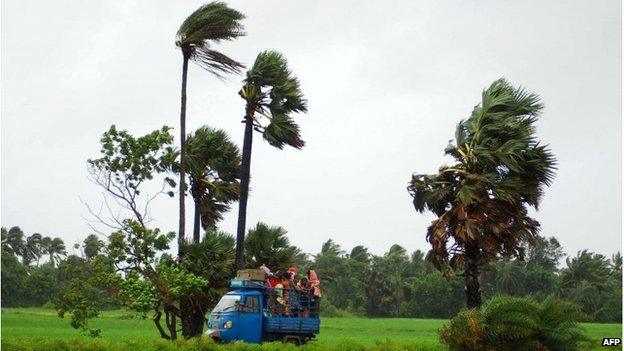
Cyclone Phailin is described as the biggest storm in the region for 14 years
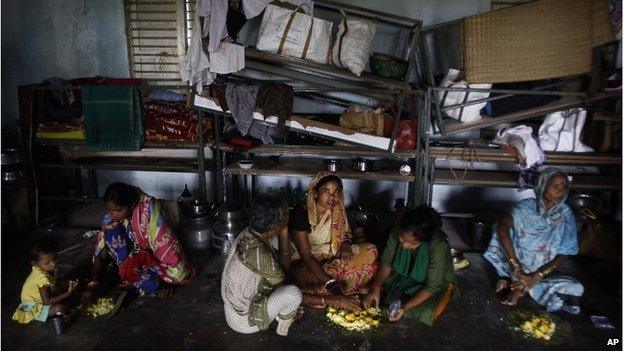
As many as 500,000 people have left their homes, many for storm shelters
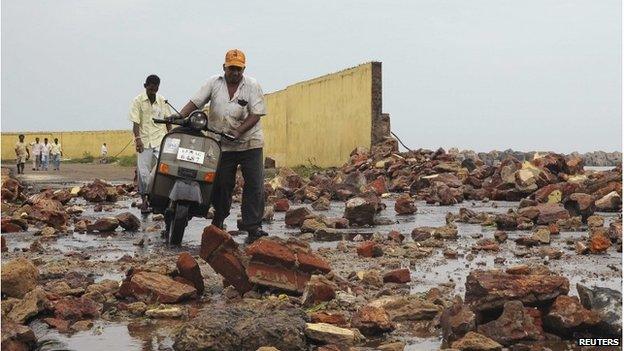
The storm was expected to cause extensive damage to coastal areas
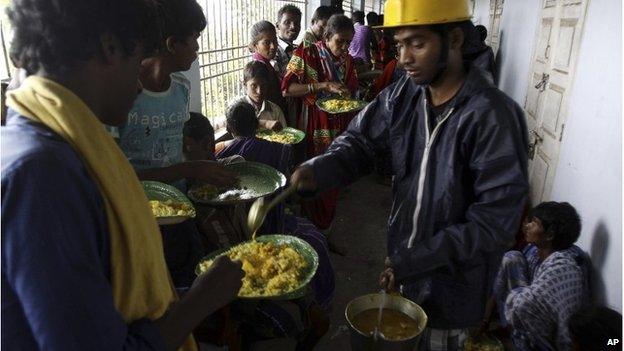
Authorities say they are now better prepared than in 1999, when a super-cyclone hit Orissa
Hours before the cyclone made landfall it was generating winds of 240 km/h (150mph) over the Bay of Bengal. Most of those evacuated were in Orissa state.
Sushant Sahoo, a resident of Orissa's state capital, Bhubaneswar, told the BBC that it had been raining there since the morning, and the streets were empty.
"We have no electricity, it is very dark right now and very grim," he said.
"I have dry food and candles. The local government has been good at getting everyone prepared and taking care of people."
India's eastern coast and Bangladesh are routinely hit by cyclonic storms between April and November that cause deaths and widespread damage to property.
In December 2011, Cyclone Thane hit the southern state of Tamil Nadu, killing dozens of people.
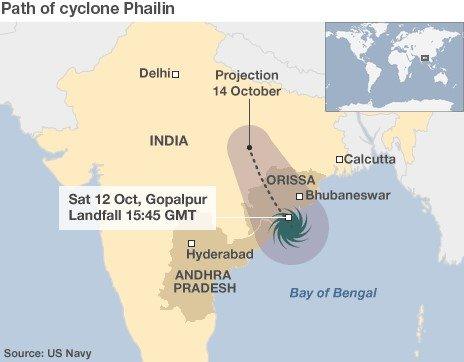
- Published12 October 2013
- Published12 October 2013